This article's lead section does not adequately summarize key points of its contents. (October 2014) |
Film is a 1965 short film written by Samuel Beckett, his only screenplay. It was commissioned by Barney Rosset of Grove Press. Writing began on 5 April 1963 with a first draft completed within four days. A second draft was produced by 22 May and a 40-leaf shooting script followed thereafter. It was filmed in New York City in July 1964.
| Film | |
|---|---|
Film by Samuel Beckett | |
| Directed by | Alan Schneider |
| Written by | Samuel Beckett |
| Starring | Buster Keaton |
| Cinematography | Boris Kaufman |
| Edited by | Sidney Meyers |
| Distributed by | Milestone Film & Video, Inc. |
Release date | Italy September 4, 1965 (Venice Film Festival) USA January 8, 1966 |
Running time | 24 minutes |
| Country | United States |
| Language | English |
Beckett's original choice for the lead – referred to only as “O” – was Charlie Chaplin, but his script never reached him. Both Beckett and the director Alan Schneider were interested in Zero Mostel and Jack MacGowran. However, the former was unavailable and the latter, who accepted at first, became unavailable due to his role in a "Hollywood epic." Beckett then suggested Buster Keaton. Schneider promptly flew to Los Angeles and persuaded Keaton to accept the role along with "a handsome fee for less than three weeks' work." James Karen, who was to have a small part in the film, also encouraged Schneider to contact Keaton.
The filmed version differs from Beckett's original script but with his approval since he was on set all the time, this being his only visit to the United States. The script printed in Collected Shorter Plays of Samuel Beckett (Faber and Faber, 1984) states:
- “This is the original film project for Film. No attempt has been made to bring it into line with the finished work. The one considerable departure from what was imagined concerns the opening sequence in the street. This was first shot as given, then replaced by a simplified version in which only the indispensable couple is retained. For the rest the shooting script followed closely the indications in the script.”
It was remade by the British Film Institute (1979, 16 mm, 26 minutes) without Beckett's supervision, as Film: a screenplay by Samuel Beckett. David Rayner Clark directed Max Wall.
It first appeared in print in Eh Joe and Other Writings (Faber and Faber, 1967).
Screenplay
Throughout the first two parts, almost everything is seen through the eye of the camera (designated in the script as E), although there are occasional moments when O's perception is seen. In the third part, much more of O's perception of the room and its contents is given. In order to distinguish between the two perceptions, objects seen by O were shot through a lens-gauze, blurring his perception while E's perception was shot without gauze or filters, keeping the images sharp.
The street
The film opens onto a rippled image that fills the entire screen. Without colour, it is difficult to discern what is being shown, but it is alive. As it moves, it is shown to be an extreme close-up of an eyelid; it fills the entire screen. The eye opens, slowly, closes, opens again, blinks and then fades into a different rippled image, still somewhat organic but changed, still. As the camera begins to pan right and up, it is discernable as a wall; we are outside a building (an old factory situated in Lower Manhattan). It is summer, though it is hard to tell. The camera's movement is not smooth. It is as if it is looking for something. Eventually, it loses interest and pans left and down back to the wall.
Suddenly, the camera (E) shifts violently to the left. A man (O) is hurrying along the wall from left to right. He pauses, hugging the wall, and E gets a chance to focus on him. He has on a long dark overcoat, the collar of which is turned up and his hat is pulled down over his face. Keaton asked Beckett what O was wearing underneath. “I hadn't thought of that,” the author admitted and then proposed, “the same coat,” which appealed to both men. He is hanging onto a briefcase with his left hand whilst trying to shield the exposed side of his face with the other. He realises he's been seen and cowers against the wall; E quickly shifts behind him.
No longer conscious of being observed, O starts off again, knocking over a trestle and stumbling over a railway sleeper—anything to stay as close as possible to the wall. He charges into a man and woman, knocking the man's hat off. E looks from the man's face to the woman's and back again. The man has a moustache and is wearing a pince-nez. They have been consulting a newspaper, which the woman keeps hold of. They both look appalled at what has happened.
E moves back to a long shot and watches O barge through and on his way. The man replaces his hat, takes off his pince-nez. and looks after the fleeing figure. The couple look at each other and the man “opens his mouth to vituperate” but the woman shushes him, uttering the only sound in the whole play. Together they turn to stare directly at E as an open-mouthed expression takes over their faces; they can’t bear to look at what they’ve seen and turn their faces away.
The action shifts back to O just as he reaches and turns a corner. He heads off down the street until he realises he is at the right doorway. He enters.
Stairs
The camera cuts to the vestibule. The viewer is directly behind O. Stairs lead up on the left, but O veers right and pauses, pulling himself together. He takes his pulse and E moves in. As soon as he becomes aware of E's presence he rushes down a couple of steps and cowers beside the wall until the camera retreats a little. When it does he reverses back up to street-level and then begins up the stairs.
A frail old woman is coming down. The camera gives us a brief close-up. “She carries a tray of flowers slung from her neck by a strap. She descends slowly and with fumbling feet.” O backs up and hurries down the steps to the right again where he sits down on a step and presses his face against the balusters. He glances up briefly to see where she is, then hides his head from view.
As the woman reaches the bottom of the stairs, she looks straight into the lens. The expression on her face changes to the one of wide-eyed horror that was displayed on the faces of the man and woman outside. She closes her eyes and collapses. E checks on where the man had been, but O has made his escape. His coat tails are seen flying up the stairs.
E chases after him and finds him at the top of the first flight. He looks around to see if there is anyone about. Satisfied, he turns left and, not without some difficulty, opens the door to a room and enters. E slips in unnoticed as O locks the door behind him and then takes his pulse once more.
The room
We find ourselves in a “small barely furnished room. The man—and the camera following him from behind—survey its contents: a dog and a cat share a basket, a caged parrot and a goldfish in its bowl sit atop a small table; the walls are bare, apart from a mirror and an unframed picture of “the face of God the Father” pinned to the wall; there is a couch with a pillow, some blankets and a rug on it, a rocking chair with a “curiously carved headrest” and there is a window with a tattered roller blind with full-length net curtains to either side.
Preparation of room
Systematically, O takes each object or creature in the room and disables its ability to ‘see’ him: he closes the blind and pulls the net curtains across, he covers the mirror with the rug, the cat and dog (“a shy and uncooperative, little Chihuahua”) are – with some difficulty – ejected from the room and the picture is torn up. Although stated simply, the mechanics needed to execute these tasks are laborious (e.g., as he passes the window, he hides behind the blanket which he holds in front of himself to cover the mirror and he carries the cat and dog facing away from him as he tries to put them out the door).
After all the above, he goes to sit in the chair. There are two holes in the headrest that suggest eyes. He ignores them and sits. O takes the folder from his case and goes to open it, but there are “two eyelets, well proportioned”; he turns the folder through 90° but he's disturbed by the parrot's eye and has to get up and cover the cage with his coat. He sits again, repeats the same process with his folder and then has to get up and cover the goldfish bowl, too.
"Beckett initially contemplated setting Film in the evening, but had to decide against it for a practical reason: 'to remove all possibility of his putting off light in room.'"
Period in rocking chair
Finally O sits down opposite the denuded wall, opens the folder, and takes out seven photographs of himself, which he examines in sequence:
He spends twice as long on pictures 5 and 6. After he looks at each one he places them at the back of the pile so the viewing order is reversed. He does not need to do anything with the seventh photograph since it is now on the top of the pile. After a few seconds, he rips it up and drops it on the floor and then works his way one after another through the rest of the photos, looking at each one briefly again and then tearing it up. The photograph of him as an infant must be on a tougher mount and he has some difficulty with that one. “n Beckett the distant past is always more tenacious than recent events.” Afterwards he rocks slightly, hands holding the armrests and then checks his pulse once more.
O is now in a similar situation to the man in A Piece of Monologue, who has also destroyed all his old photographs and now stands facing a similarly blank wall.
Investment proper
(See the opening two paragraphs of Richard Cave’s review of the 1979 version of the film for a discussion of the possible definition of ‘investment’ here).
As O begins to doze off, E begins to move round to his left. Suddenly, O realises he is being watched and turns his head violently to the right. E moves behind him again. He resumes rocking and dozes off. This time E whirls round to the right, passing the window, the mirror, the birdcage and fishbowl and finally stops in front of the space on the wall where the picture was.
E turns around and, for the first time, we are face-to-face with O, asleep in his rocking chair. All of a sudden he wakes and stares straight into the camera lens. He looks very much like the man in the seventh photograph only much older. He still has the eye patch.
He half starts from the chair, then stiffens. Gradually, the horrified look we have seen before on the couple and the old woman's faces appears on his. He is looking at himself, but not the scruffy, wearish man we have been watching. The man before him, standing with a big nail beside his head, has a look of “acute intentness” on his face. O slumps back into the chair and starts rocking. He closes his eye and the expression fades. He covers his face with his hands briefly and then looks again. This time we see the face of E in close-up, just the eyes.
O covers his eyes again, bows his head. The rocking dies down and then stops. The screen goes black. We then see the opening image of the eye, which is frozen, and the credits are presented over it. Once finished, the eye closes and the film is over.
- "The greatest Irish film." – Gilles Deleuze
- A "load of old bosh." – Dilys Powell (The Sunday Times)
The work is studied by and has been the subject of criticism from both film and theatre scholars, with the former tending to study the film as shot, the latter tending to study the script as written. Critical opinion is mixed, but it is generally held in higher regard by film scholars than it is by theatre or Beckett scholars. The views above represent extremes. A ‘middle-ground’ review would probably be “a poor attempt by a genuine writer to move into a medium that he simply hadn’t the flair or understanding of to make a success.” Beckett's own opinion was that it was an “interesting failure.”
The film opens and closes with close-ups of a sightless eye. This inevitably evokes the notorious opening sequence of Un Chien Andalou in which a human eye is sliced open with a razor blade. In fact, The Eye was an early title for Film, though admittedly, at that time, he had not thought of the need for the opening close-up. As a student of French literature, Beckett would have been familiar with Victor Hugo’s poem La Conscience. ‘Conscience’ in French can mean either ‘conscience’ in the English sense or ‘consciousness’ and the double meaning is important. Hugo's poem concerns a man haunted by an eye that stares at him unceasingly from the sky. He runs away from it, ever further, even to the grave, where, in the tomb, the eye awaits him. The man is Cain. He has been trying to escape consciousness of himself, the self that killed his brother, but his conscience will not let him rest. The eye/I is always present and, when he can run no further, must be faced in the tomb.
Film takes its inspiration from the 18th century Idealist Irish philosopher Berkeley. At the beginning of the work, Beckett uses the famous quotation: "esse est percipi" (to be is to be perceived). Notably, Beckett leaves off a portion of Berkeley's edict, which reads in full: “esse est percipi aut percipere” (to be is to be perceived or to perceive). Beckett was once asked if he could provide an explanation that ‘the man in the street’ could understand:
- “It’s a movie about the perceiving eye, about the perceived and the perceiver – two aspects of the same man. The perceiver desires like mad to perceive and the perceived tries desperately to hide. Then, in the end, one wins.”
In between takes on the set near the Brooklyn Bridge, Keaton told a reporter something similar, summarizing the theme as "a man may kee
Watch movie Film Movie online on Amazon
Watch movie Film Movie online
Watch The Movie On PrimeDil Hai Ke Manta Nahin Full HD Movie Download
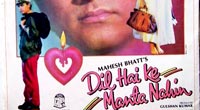
Love Story 2050 Full HD Movie Download
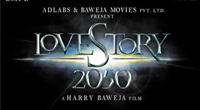
Thanedaar Full HD Movie Download

Main Aurr Mrs Khanna Full HD Movie Download
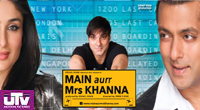
Mastana Full HD Movie Download
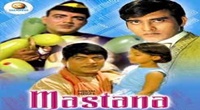
Dombivli Fast Full HD Movie Download
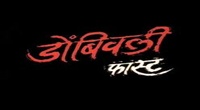
Samaj Ko Badal Dalo (1970) Full HD Movie Download
.jpg)
Cheppu Full HD Movie Download
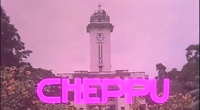
Roja Full HD Movie Download
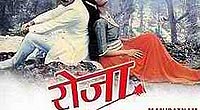
Mumbai Meri Jaan Full HD Movie Download
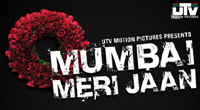
Chamatkar Full HD Movie Download
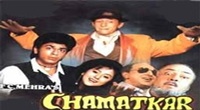
Seetharamakalyanam Full HD Movie Download
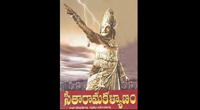
Jalakanta Full HD Movie Download
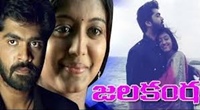
Poovilanghu Full HD Movie Download
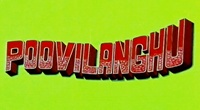
Kalasi Unte Kaladu Sukham Full HD Movie Download
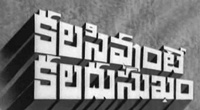
Asadhyudu Full HD Movie Download
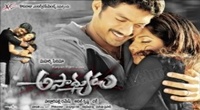
Lonavla Bypass Full HD Movie Download
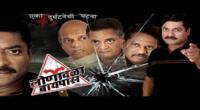
Geetham Full HD Movie Download
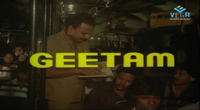
Bangaru Bhoomi Full HD Movie Download
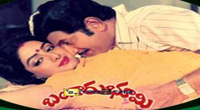
Bunty Aur Babli Full HD Movie Download
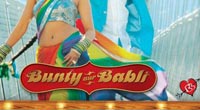
Rocket Singh: Salesman of the Year Full HD Movie Download
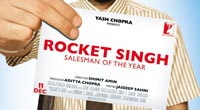
Download latest Movie from bollywood
- 1> baaghi 3
- 2> THE SKY IS PINK MOVIE FULL STORY AND REVIEW
- 3> Luka Chuppi
- 4> TO ALL THE BOYS I’VE LOVED BEFORE
- 5> Kabir Singh
- 6> Street Dancer 3D
- 7> Simmba
- 8> Gone Girl
- 9> The Girl Who Lived
- 10> Ludo
- 11> DILWALE DULHANIA LE JAYENGE
- 12> GUILTY
- 13> The Godfather
- 14> Adventures of Rusty
- 15> Sooryavanshi
- 16> Satyameva Jayate 2
- 17> Thappad
- 18> Bhool Bhulaiyaa 2
- 19> KGFChapter 2
- 20> Mardaani 2
- 21> Pinjar
- 22> Shivaji maharaj
- 23> Ek Villian 2
- 24> Hungama 2
- 25> Divergent
- 26> Mumbai Saga
- 27> The Internship
- 28> HIT (telugu)
- 29> Panga
- 30> The perfect date
- 31> 16 December
- 32> Gopala Gopala (Telugu)
- 33> Brahmastra
- 34> Gangubai Kathiawadi
- 35> Manmadhudu
- 36> Nenu local
- 37> Mahanati
- 38> Shatamanam bavathi
- 39> Lagaan
- 40> After
- 41> MOM
- 42> Shamshera
- 43> Raguvaran BTech
- 44> Khakee
- 45> The villain
- 46> OM
- 47> Mr. perfect
- 48> Bueatifull mind
- 49> Hichki
- 50> Gabbar Singh
- 51> Jogi
- 52> Before Sunrise
- 53> Before Sunset
- 54> Before Midnight
- 55> The Big Bull
- 56> Top Gun: Maverick
- 57> The Purge
- 58> The Sky is Pink
- 59> Laxmmi Bomb
- 60> Sadak 2
- 61> Sufna
- 62> Prithviraj
- 63> PK
- 64> Coolie No 1(2020)
- 65> Black Widow
- 66> Dear Zindagi
- 67> Dil Bechara
- 68> PHIR HERA PHERI
- 69> WAR
- 70> Dostana
- 71> RRR: Roudram Ranam Rudhiram
- 72> Maidan
- 73> Dabbang 3
- 74> Chhalaang
- 75> life as we know it
- 76> SherShaah
- 77> Sandeep Aur Pinky Faraar
- 78> Event Horizon
- 79> 83
- 80> Radhe: Your Most Wanted Bhai
- 81> Gunjan Saxena: The Kargil Girl
- 82> Mr India
- 83> Vivah
- 84> Anokha Bandhan
- 85> Ghost
- 86> Bhoot: Part One - The Haunted Ship
- 87> Haseen Dilruba
- 88> Laal Singh Chaddha
- 89> Qismat
- 90> Rajput
- 91> Drive
- 92> Dil Chahta Hai
- 93> Dil Ki Baazi
- 94> Dil Ka Rishta
- 95> Teesri Manzil
- 96> Dil
- 97> Love Aaj Kal
- 98> Khaali Peeli
- 99> Bunty Aur Babli 2
- 100> Atrangi Re
- 101> Gulabo Sitabo
- 102> Jodi
- 103> Suraj Pe Mangal Bhari
- 104> Deewana
- 105> Attack
- 106> Sardar Udham Singh
- 107> Toofan
- 108> THE LOVEBIRDS
- 109> Jersey
- 110> Ginny Weds Sunny
- 111> Thalaivi
- 112> Shiddat
- 113> Angels vs Zombies
- 114> Koi Mil Gya
- 115> Thank God
- 116> Bhuj: The Pride of India
- 117> Hum Aapke Hain Kaun
- 118> The Platform
- 119> Bird Box
- 120> Roohi Afzana
- 121> Torbaaz
- 122> Nikamma
- 123> World War Z
- 124> Extraction
- 125> Train to Busan
- 126> Life of Pi
- 127> SHAADI MEIN JROOR AANA
- 128> Himmat Aur Mehnat
- 129> To All The Boys: P.S. I Still Love You
- 130> Mimi
- 131> Good Newwz
- 132> Shubh Mangal Zyada Saavdhan
- 133> Raabta
- 134> Harry Potter and the Philosopher's Stone
- 135> Harry Potter and the Chamber of Secrets
- 136> Chhapaak
- 137> War of the Worlds
- 138> Harry Potter and the Prisoner of Azkaban
- 139> Harry Potter and the Goblet of Fire
- 140> MURDER MYSTERY
- 141> Shakuntala Devi
- 142> Bachchan Pandey
- 143> Jayeshbhai Jordar
- 144> Sheer Qorma
- 145> Saina
- 146> 'O' Pushpa I hate tears
- 147> Kedarnath
- 148> MS Dhoni The Untold Story
- 149> Chhichhore
- 150> Badhaai Ho
- 151> Unstoppable
- 152> Oz the Great And Powerful
- 153> The Girl on the Train
- 154> Haathi Mere Saathi 2020
- 155> The Conjuring: The Devil Made Me Do It
- 156> Gandhi Se Pehle Gandhi
- 157> The Song of Scorpions
- 158> Srimanthudu
- 159> Hello Guru Prema Kosame
- 160> Beauty and The Beast
- 161> Black Panther
- 162> Charlie and the Chocolate Factory
- 163> Bole Chudiyan
- 164> Fidaa
- 165> Duvvada Jagannadham
- 166> Bruce Lee: The Fighter
- 167> Hyper
- 168> Yaara
- 169> Red (2020)
- 170> Shivam
- 171> That Is Mahalakshmi
- 172> Nishabdham
- 173> Aashram 2020 web series
- 174> Laxmii
- 175> Mismatched
- 176> STUDENT OF THE YEAR 2
- 177> NAIL POLISH
- 178> Ramprasad Ki Tehrvi
- 179> KAAGAZ
- 180> 12 o Clock
- 181> The Power
- 182> bolo hau
- 183> Tribhanga
- 184> JAMUN
- 185> Madam Chief Minister
- 186> Maasaab
- 187> Aadhaar
- 188> Tanhaji
- 189> Bhaagi 3
- 190> Bhootnath
- 191> MALANG
- 192> Jai Mummy Di
- 193> Haathi Mere Saathi 2021
- 194> Shakeela
- 195> Unpaused
- 196> Annayya
- 197> Vamsoddharakudu
- 198> Mrugaraju
- 199> Narasimha Naidu
- 200> Sankranti
- 201> Manasu Maata Vinadhu
- 202> Anjaane
- 203> Apaharan
- 204> Bachke Rehna Re Baba
- 205> Bewafaa
- 206> Roohi
- 207> Radhe
- 208> Zindagi Khoobsoorat Hai
- 209> Yeh Mohabbat Hai
- 210> Yeh Kya Ho Raha Hai?
- 211> The Tomorrow War
- 212> DehradunDiary
- 213> Meri Shaadi Karaoo
- 214> Matruu Ki Bijlee Ka Mandola
- 215> No One Killed Jesica
- 216> Aag Ka Goola
- 217> Eight Million Dollars
- 218> Three Hundred
- 219> Cats and Dog
- 220> Decoy
- 221> Gold Rush
- 222> You Have Got Mail
- 223> Final Destination three
- 224> Tofan
- 225> Jungle
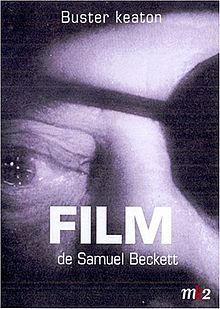 Story of movie Film Movie :
Story of movie Film Movie : 